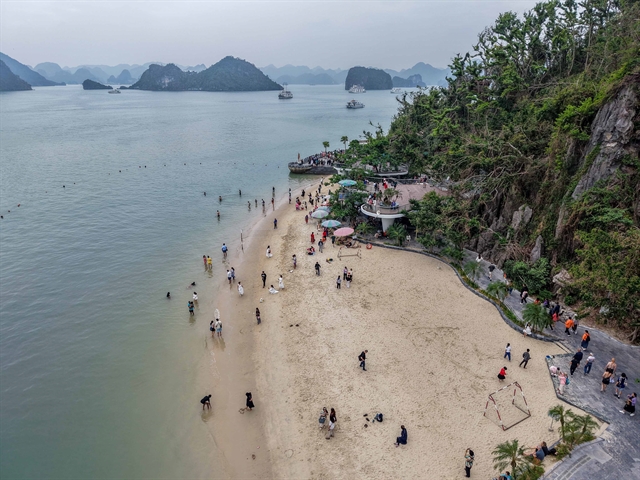The northeastern province of Quảng Ninh is planning to further make use of heritage to develop sustainable tourism, step by step becoming a regional and international linkage hub, and an attractive destination for tourists in the global tourism map.

Hạ Long Bay in the northeastern province of Quảng Ninh.— VNA/VNS Photo
QUẢNG NINH — The northeastern province of Quảng Ninh is planning to further make use of heritage to develop sustainable tourism, step by step becoming a regional and international linkage hub, and an attractive destination for tourists in the global tourism map.
In 2024, the province welcomed 19 million visitors, including 3.8 million foreign holidaymakers, 1.7 times higher than the figure in 2023.
The province is striving to attract 20 million visitors this year, including 4.5 international tourists, and earn tourism revenue of VNĐ50 trillion (US$2 billion).
Secretary of the Quảng Ninh provincial Party Committee Vũ Đại Thắng said that this year, the province focuses on preserving heritage, developing smart tourism, applying digital technology in tourism promotion and management, and creating innovative tourism products based on cultural and historical foundations to improve visitors' experiences.
At the same time, it aims to effectively mobilise and utilise all legal resources to develop new products and innovate existing ones; develop creative tourism types; build a green tourism ecosystem; and develop high-quality human resources.
Quảng Ninh prioritises enhancing tourism promotion, seeking new markets, and applying information technology, artificial intelligence, and digital transformation.
It also focuses on diversifying and improving the quality of tourism products, especially high-end tourism products, based on the exploitation of traditional cultural values, particularly heritage values.
In 2025, the province will continue to study and launch new tourism products based on cultural, heritage, and historical site values. The province is diversifying tourism products, leveraging the values of the world natural heritage of Hạ Long Bay to enhance new experiences for visitors. This includes developing three beaches - Soi Sim, Hang Cỏ, and Trinh Nữ on Hạ Long Bay; hosting artistic performances combined with parties in suitable caves on the bay; and identifying seven pristine island areas and beaches for high-spending customers who account for only 1 per cent of the global population.
The province’s tourism sector is concentrating on investing in key tourism sites and attractions; effectively implementing conservation programmes that promote the values of natural, tangible, and intangible cultural heritage, and developing the cultural industry.
Specifically, it focuses on developing the cultural industry, especially sectors linked to its heritage strengths, such as cultural tourism, gastronomy, and artisanal crafts, while piloting a model for a high-tech cultural industrial park.
Quảng Ninh identifies heritage as a special asset, a commodity whose value increases over time and has a significant impact on sustainable tourism economic development, Thắng said.— VNA/VNS